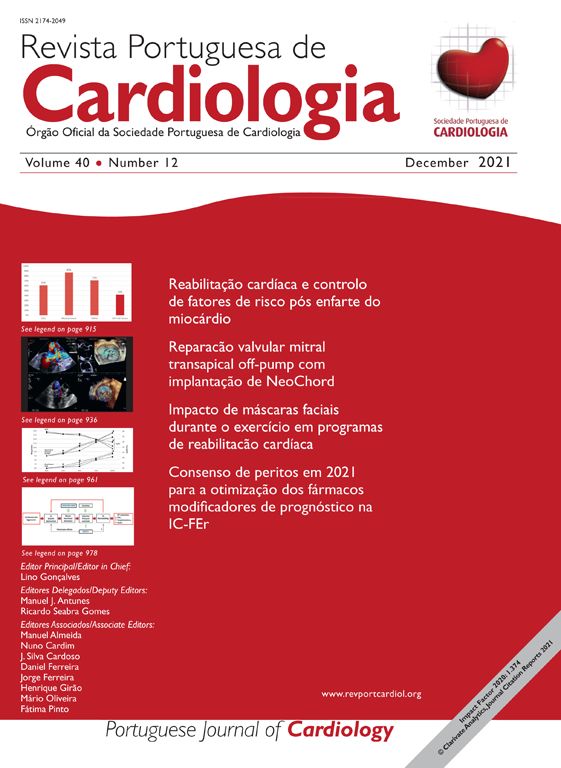Inflammatory myofibroblastic tumor (IMT) of the heart, also known as inflammatory pseudotumor among other designations, was first reported by Gonzalez-Crussi et al. in 1975.1 It is rare (<5% of primary heart tumors),2 with 62 cases reported in the international literature by 2021.3 It can affect any age group, but favors young persons.2 Although found in multiple cardiac locations, the atria (particularly the right) are its preferred sites.2 Location and size affect clinical presentation and outcome, which range from asymptomatic and incidental, to constitutional symptoms such as fever and weight loss, to cardiological signs and symptoms (including chest pain, ischemia, valve occlusion or dysfunction, arrhythmia or syncope) and even sudden death.2–4 Imaging techniques are of paramount importance for diagnostic and follow-up workflow.2–4 Surgery is the usual therapeutic approach.2–4 Macroscopically, it is often pedunculated and endocardium-based.2 Microscopically, it is composed of spindle cells (fibroblasts and myofibroblasts) showing little or no atypia as well as no or very few mitoses (≤1 per 10 high-power fields), and inflammatory cells (mostly lympho-histio-plasmocytic), in a myxoid stroma.3 Specific stains are used to characterize the spindle cells (Masson trichrome) and the stroma (periodic acid-Schiff and Alcian blue for mucinous material and elastic van Gieson to exclude elastic fibers).2–4 Immunohistochemistry can further confirm the diagnosis (vimentin, smooth muscle actin, desmin, calponin and anaplastic lymphoma kinase I [ALK-I] positivity for the spindle cells). The inflammatory cells may also be marked. If ALK-I is negative (in around 50% of IMTs, apparently with worse prognosis), genetic tests may be performed, searching for 2p23 locus clonal ALK gene rearrangements, ALK gene fusion with proto-oncogenes and ALK overexpression, among others.2–4
The differential diagnosis is particularly with benign tumors like cardiac fibroma or myxoma, or with malignant neoplasms like sarcomas.4 IMT has an indolent growth, due to its intermediate biological nature.2–4 Mortality has been estimated at 24.6%, with metastasis in 2% and recurrence in 25%.3 The underlying factors that lead to the development of IMT are unknown, although multiple theories have been proposed, including fibroblastic-inflammatory reaction to infection, trauma or iatrogenic aggression; autoimmune disease; or neoplastic chromosomal abnormalities.2–4 Apart from incomplete surgical resection, the ongoing pathological stimuli proposed by these etiological theories could explain potential IMT recurrence, the appearance of multiple synchronous or metachronous heart IMTs (in the same or different intracardiac locations) and even the malignant sarcomatous transformation of an IMT.
Regarding the case reported by Dominguez-Massa et al. in this issue of the Journal,5 differentiation from an IMT to an intimal sarcoma in the right atrium, three years after surgery for an IMT in the left atrium, cannot be confirmed. It is known that immunohistochemical positivity for murine double minute 2 (MDM2) with or without fluorescence in-situ hybridization confirmation of amplification of the proto-oncogene MDM2 – relevant in the diagnosis of intimal sarcoma – may also occur in IMT,6 requiring accurate study in order to find the associated molecular aberration said to be typical of intimal sarcoma.7 This brief overview shows how complex IMT diagnosis can be.
Conflicts of interestThe author has no conflicts of interest to declare.





